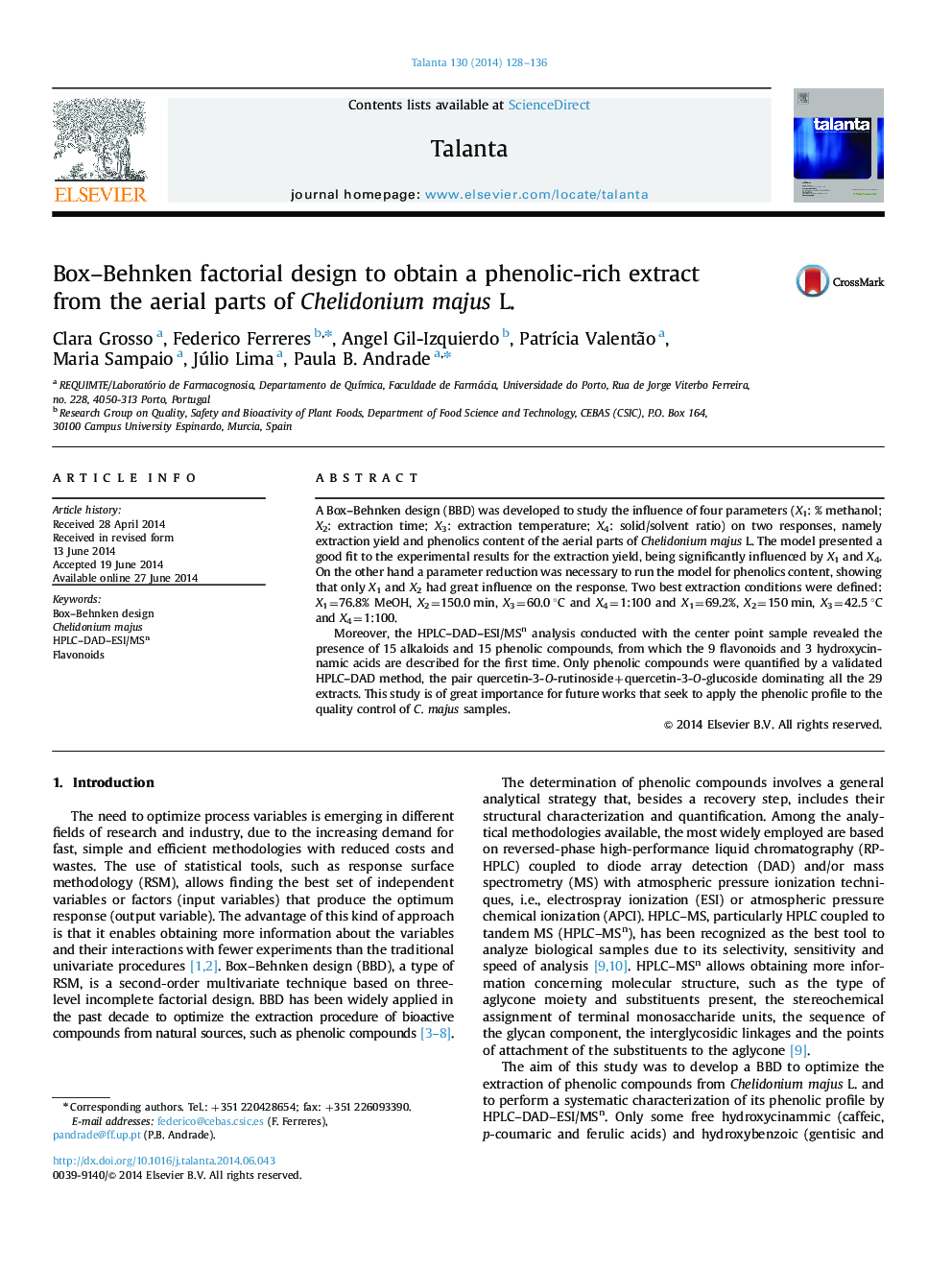| Article ID | Journal | Published Year | Pages | File Type |
|---|---|---|---|---|
| 1243570 | Talanta | 2014 | 9 Pages |
•First systematic HPLC–DAD–ESI/MSn characterization of phenolics from C. majus.•Validation of HPLC–DAD method for phenolics quantification.•Optimization of phenolics extraction by a 4-factor Box–Behnken design.•Good fitting of the model to the experimental results.•% MeOH affects both extraction yield and phenolics content.
A Box–Behnken design (BBD) was developed to study the influence of four parameters (X1: % methanol; X2: extraction time; X3: extraction temperature; X4: solid/solvent ratio) on two responses, namely extraction yield and phenolics content of the aerial parts of Chelidonium majus L. The model presented a good fit to the experimental results for the extraction yield, being significantly influenced by X1 and X4. On the other hand a parameter reduction was necessary to run the model for phenolics content, showing that only X1 and X2 had great influence on the response. Two best extraction conditions were defined: X1=76.8% MeOH, X2=150.0 min, X3=60.0 °C and X4=1:100 and X1=69.2%, X2=150 min, X3=42.5 °C and X4=1:100.Moreover, the HPLC–DAD–ESI/MSn analysis conducted with the center point sample revealed the presence of 15 alkaloids and 15 phenolic compounds, from which the 9 flavonoids and 3 hydroxycinnamic acids are described for the first time. Only phenolic compounds were quantified by a validated HPLC–DAD method, the pair quercetin-3-O-rutinoside+quercetin-3-O-glucoside dominating all the 29 extracts. This study is of great importance for future works that seek to apply the phenolic profile to the quality control of C. majus samples.
Graphical abstractFigure optionsDownload full-size imageDownload as PowerPoint slide
